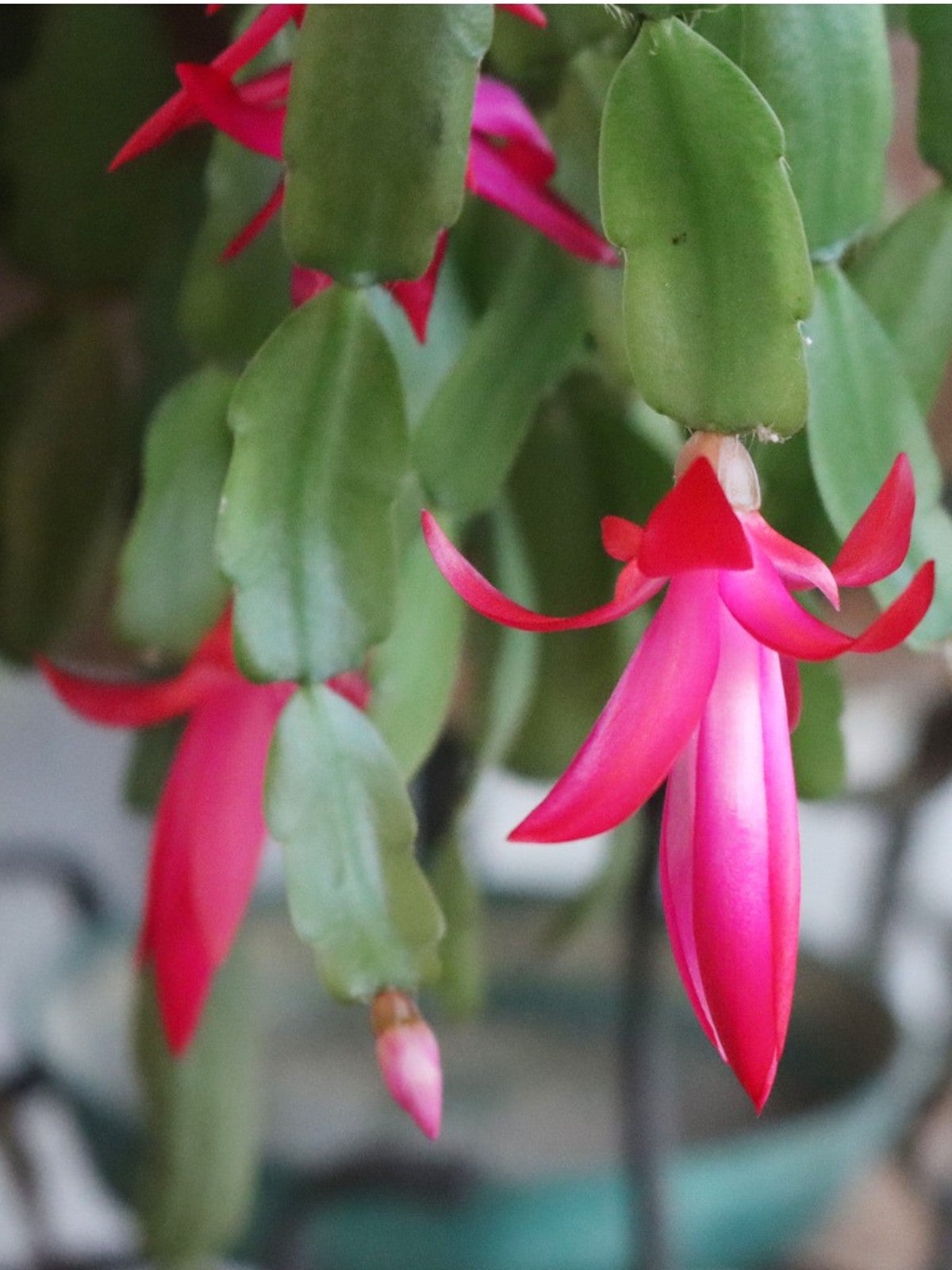
Christmas Cactus (Schlumbergera bridgesii) is a popular, winter-flowering houseplant that makes a great addition to nearly any indoor setting. It is not only easy to care for but propagates easily, too, making it an exceptional candidate for holiday gift giving. Let’s look at how to plant a Christmas cactus and care for it.
The very first step is understanding if you actually have a Christmas cactus. Easter and Thanksgiving cacti look deceptively similar. Click here to figure out which holiday cactus you have.
How to Plant Christmas Cactus
The Christmas cactus is easily propagated by cutting a short Y-shaped segment from the stem tips. Make certain, however, that the cutting is taken from healthy plant foliage only. Plant the segment approximately a quarter of its length deep in slightly sandy soil. Moisten it evenly and place the cutting in a well-lit area, staying away from any direct sunlight.
To root cuttings for new plants, cut back shoots from the tips, cut at the second joint of each tip. let it callous over for a few days. The cutting should show signs of growth within a few weeks, at which time the plant can be transferred to another container, if desired, with a looser potting soil mix of compost, loam and sand. The plant is happiest with a soil pH balance of 5.5 to 6.2.
How to Care for Christmas Cactus
Advice for Christmas cactus care tells us that it performs well under average home conditions with moderate care. The Christmas cactus will adapt to low light conditions, but the plant will produce blooms more readily if exposed to brighter light. That being said, too much direct sunlight can burn its leaves, so keep the Christmas cactus in an appropriate area to avoid this.
Christmas cactus moisture is important as well. The plant requires frequent and thorough watering, during its active growth in spring and summer, keeping the soil slightly moist. Allow Christmas cactus moisture levels to drop and dry out some between watering intervals, but never completely, and never let the plant sit in water, as this will lead to root and stem rot. Applying a mild houseplant fertilizer solution every other week is also acceptable.
When considering how to care for Christmas cactus, keep in mind it also prefers temperatures hovering between 60 and 70 degrees F. (15-21 C.) with average to high humidity levels. Placing a tray of pebbles filled with water beneath the Christmas cactus container is a good way to add more humidity to the home.. You can help to maintain its bud set by adequate watering, avoid exposure to cold drafts, unvented heaters, or rough handling. Night temperatures above 70 degrees F may inhibit bud development.
After Flowering
Once the Christmas cactus has ceased all flowering (usually by fall), or about six to eight weeks before you want the plant to rebloom, you should allow the plant to begin its dormancy cycle by cutting back on moisture and reducing both light and temperature. After blooming, these plants like shorter days and cooler nights. The plant goes into active growth once it has finished blooming.
Simply cut back the watering and make sure the plant receives 12-14 hours of darkness and average temperatures around 50-55 F. (10-12 C.). Also, keep the Christmas cactus away from drafty areas and avoid sudden changes in moisture, temperature or sunlight.
Possible Issues
If your beautiful plant doesn’t produce many blossoms or it begins to drop its buds, there could be a few reasons. Try providing it with 13 straight hours of nighttime darkness. If there has been a sudden drop in temperature, the Christmas cactus may react by withholding blooms or dropping them. Mealy bugs, aphids and scale are occasional visitors, but can be gently wiped away with a soft cloth or swab, dipped in alcohol.
